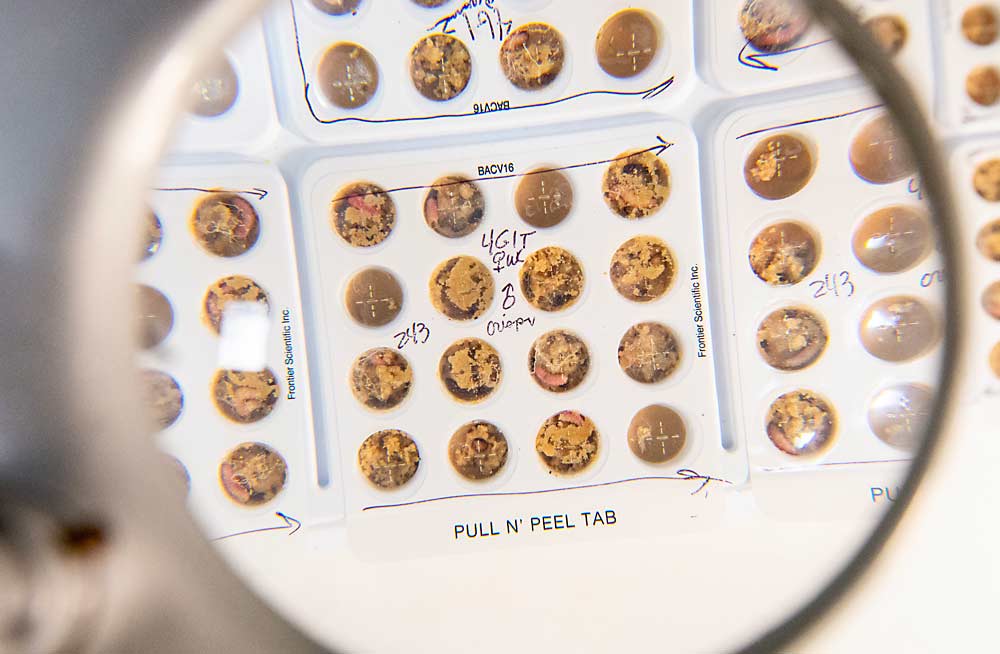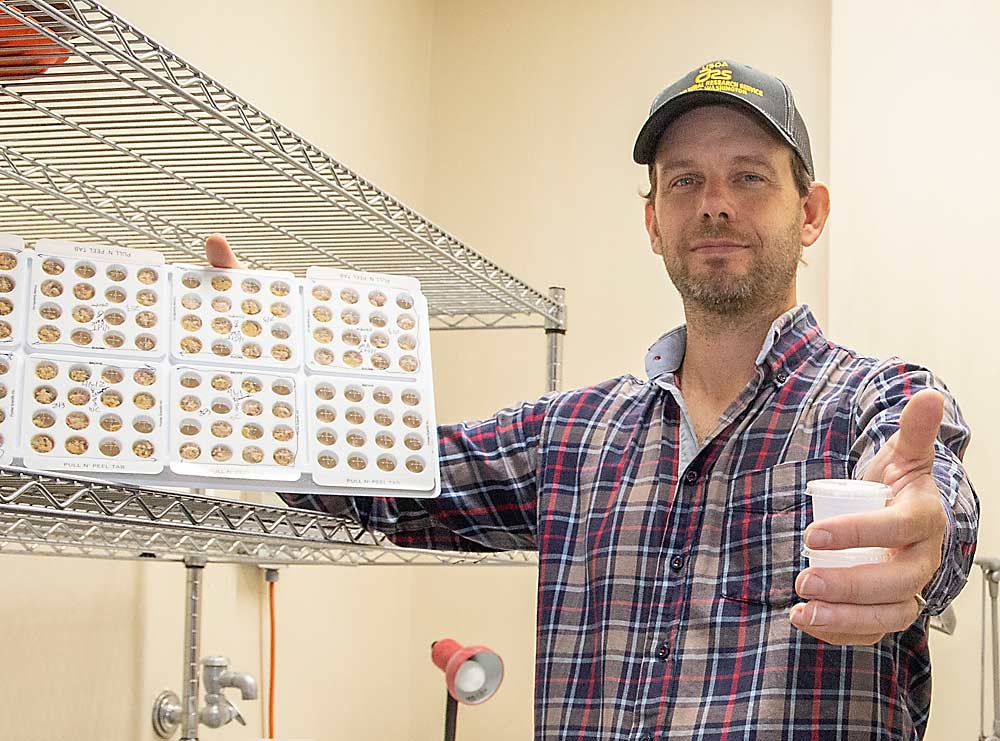
A U.S. Department of Agriculture researcher wants to use genetics to control codling moth.
William Walker of the Agricultural Research Service laboratory in Wapato, Washington, has three projects underway that aim to use genetic manipulation to thwart one of the Northwest apple industry’s most loathed pests.
Growers report codling moth challenges have increased in recent years, prompting a resurgence of research to refine existing control methods, such as pheromone disruption, and explore new ones. The Washington Tree Fruit Research Commission considers codling moth its highest apple priority and is funding all three of Walker’s projects at a collective $557,000.
“Some of these approaches are newer technologies that people don’t quite understand but have the capability to reduce codling moth pressure and spray inputs while increasing fruit production,” Teah Smith, an entomologist and ag consultant for Zirkle Fruit Co. of Selah, Washington, said in an email. “If these approaches are economically feasible, it seems like a win for the grower and consumer.”
One of Walker’s experiments uses CRISPR gene editing to alter a female moth’s sense of “smell,” so she does not like apples as a place to lay eggs. Another aims to create a biopesticide that interrupts the genetic code translation and shuts down a moth larva’s ability to manufacture a protein critical for survival. This approach is called RNA interference, and it’s already been commercialized for other pests. The third involves altering the genes of existing virus-based pesticides to make them more effective.
The CRISPR project has reached the end of its three-year research commission funding, but Walker says he has enough results to warrant continuing with his ARS budget.
He has figured out the gene editing part, he said. Next comes testing insect behavior. The problem is, even his nonedited insects won’t lay eggs on apples, giving him no control group. His laboratory colony of moths, inbred and removed from their normal environmental stresses, have grown accustomed to laying eggs in specimen bags and don’t seem to care about apples anymore.

Walker, quick to point out he’s an expert in genetics, not behavior, has been discussing with colleagues how to design a better test.
“This phase of the research is very much a work in progress,” he said.
The CRISPR project continues work by ARS geneticist Stephen Garczynski, who died in February 2019. Walker was hired in October 2020.
Also, Walker stresses that his goal is to improve odorant-based control strategies, not release edited moths into the wild.
Meanwhile, he is just getting started on the three-year biopesticide project. He received funding for the project in summer 2022 and hired a technicianin December.
The plan is to create a biological spray or grain that codling moth larvae would ingest to short-circuit a gene that makes survival-critical proteins.
He’s unsure how quickly it will work. After hatching from eggs, larvae typically burrow into apples within 24 hours. The biopesticide may not prevent that, but it will eventually kill the larvae and help keep the population in check, Walker said.
A third project aims to genetically manipulate existing viral insecticides to work more effectively. This one also is in the early stages due to some staffing delays, Walker said.
Organic apple growers sometimes use a granular form of virus that kills codling moths, but they report it’s not as effective as it used to be. Walker thinks it could work even better with some genetic tinkering. One idea is to develop genetic hybrid strains of a common form of the oft-used CpGV (Cydia pomonella granulovirus) that may have greater potency. Another is to genetically add spider toxin to a virus. A third is to combine two different moth viruses into one to “co-infect” the moths.
Viability
Industry experts consider Walker’s work a viable part of future codling moth control as the American public gradually eases its concerns with genetic manipulation. Row crops such as corn and soybean now contain genetic changes. The U.S. Environmental Protection Agency has authorized limited releases of mosquitoes genetically skewed to produce only male offspring. Researchers have developed an RNA interference product for the Colorado potato beetle and applied for EPA registration.
“We have evidence that genetically modified organisms can be an important part of an IPM approach,” said Chris Adams, an Oregon State University entomologist and chair of a Northwest codling moth task force.
Practical applications will take time to develop, but if moths are not attracted to apples, he can imagine a grower planting a nearby “trap crop” of something that attracts them, Adams said.
If the ideas work and reach commercialization — and if they are cost-effective — some of Walker’s techniques may someday replace tried-and-true pheromone disruption, especially the protein silencing spray, said Smith, who also serves on the research commission.
She encourages Walker to start exploring how the methods would qualify for organic certification, which he has done. For example, spider toxins are used in other insecticides, but they don’t qualify, she said.
“There are going to be challenges … with these projects, but I think if we can all work together to help in the process that we can overcome them,” she said.
—by Ross Courtney






Leave A Comment